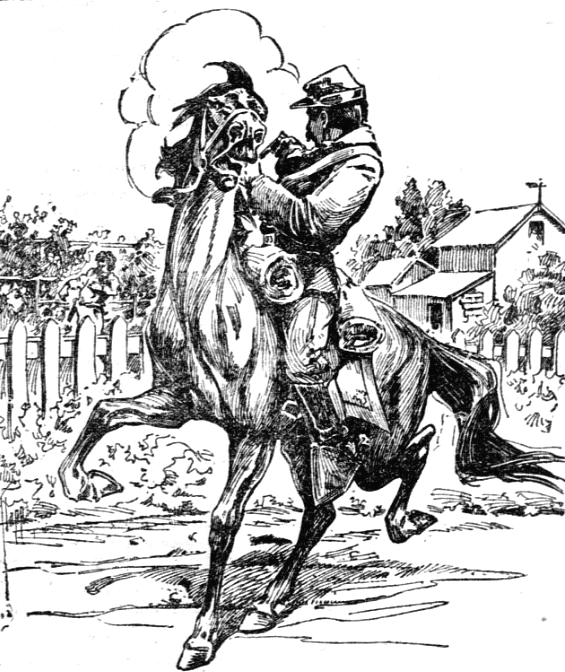|
Maden Hall Farm
Maden Hall Farm, also called the Fermanagh-Ross Farm, is a historic farm near the U.S. city of Greeneville, Tennessee. Established in the 1820s, the farmstead consists of a farmhouse and six outbuildings situated on the remaining of what was once a antebellum farm. Maden Hall has been designated a century farm and has been placed on the National Register of Historic Places. William Ross II (1790–1865), the son of a Scotch-Irish immigrant, built the Maden Hall farmhouse in 1825, and in subsequent years acquired the surrounding land, much of it given to him by his father-in-law, John Gass. In spite of raids from bushwhackers, the farm survived the U.S. Civil War intact, and after the war the farm was maintained by Ross's children and grandchildren, most of whom made relatively few changes to the farm over several decades. In 1968, former University of Tennessee football standout Len Coffman (1915–2007) and wife Jennie King (a Ross descendant) purchased the farm fr ... [...More Info...] [...Related Items...] OR: [Wikipedia] [Google] [Baidu] |
Greeneville, Tennessee
Greeneville is a town in and the county seat of Greene County, Tennessee, United States. The population as of the 2020 census was 15,479. The town was named in honor of Revolutionary War hero Nathanael Greene, and it is the second oldest town in Tennessee. It is the only town with this spelling in the United States, although there are numerous U.S. towns named ''Greenville''. The town was the capital of the short-lived State of Franklin in the 18th-century history of East Tennessee. Greeneville is known as the town where United States President Andrew Johnson began his political career when elected from his trade as a tailor. He and his family lived there for most of his adult years. It was an area of strong abolitionist and Unionist views and yeoman farmers, an environment that influenced Johnson's outlook. The Greeneville Historic District was established in 1974. The U.S. Navy was named in honor of the town. Greeneville is part of the Johnson City- Kingsport- Bristol ... [...More Info...] [...Related Items...] OR: [Wikipedia] [Google] [Baidu] |
Earnest Farms Historic District
The Earnest Farms Historic District is a historic district consisting of four historic farms and associated structures near the community of Chuckey in Greene County, Tennessee, United States. The farms include the Elmwood Farm, the Broyles Farm, the Crum Farm, and the Jim Earnest Farm, all of which were initially developed by early pioneer Henry Earnest (1732–1809) and his descendants in the late-18th and 19th centuries. The district includes the Ebenezer Methodist Church, which is home to the oldest Methodist congregation in Tennessee, and the Earnest Fort House, which is one of the oldest houses in the state. Elmwood Farm has been designated a century farm and is one of the oldest farms in Tennessee, having been cultivated continuously since 1777. Henry Earnest settled along the banks of the Nolichucky River in 1774 and built the Earnest Fort House on a bluff overlooking the river in 1782. Earnest donated the land for the Ebenezer Methodist Church, which was complete ... [...More Info...] [...Related Items...] OR: [Wikipedia] [Google] [Baidu] |
Springhouse
A spring house, or springhouse, is a small building, usually of a single room, constructed over a spring. While the original purpose of a springhouse was to keep the spring water clean by excluding fallen leaves, animals, etc., the enclosing structure was also used for refrigeration before the advent of ice delivery and, later, electric refrigeration. The water of the spring maintains a constant cool temperature inside the spring house throughout the year. Food that would otherwise spoil, such as meat, fruit, or dairy products, could be kept there, safe from animal depredations as well. Springhouses thus often also served as pumphouses, milkhouses, and root cellars. The Tomahawk Spring spring house at Tomahawk, West Virginia, was listed on the National Register of Historic Places in 1994. Gallery Image:springhouse.jpg, A small spring house near Collegeville, Pennsylvania. Image:15 21 197_indian_springs.jpg, Stone spring house at Indian Springs State Park. File:The Brewery ... [...More Info...] [...Related Items...] OR: [Wikipedia] [Google] [Baidu] |
Corn Crib
A corn crib or corncrib is a type of granary used to dry and store corn. It may also be known as a cornhouse or corn house. Overview After the harvest and while still on the cob, corn is placed in the crib either with or without the husk. The typical corn crib has slats in its walls to allow air to circulate through the corn, both allowing it to dry initially and helping it stay dry. The slats expose the corn to pests, so corn cribs are elevated beyond the reach of rodents. Although granaries had been used around the world in many cultures who grew grain for food, corn cribs were first used by Native Americans and then quickly adopted by European settlers. Struggling European settlers often raided corn cribs for food. As a result, at least some Native groups abandoned the corn crib and buried food in caches. Corn crib designs vary greatly. They were originally made of wood, but other materials such as concrete have also been used. The basic corn crib consists of a roofed bin ... [...More Info...] [...Related Items...] OR: [Wikipedia] [Google] [Baidu] |
Blount County, Tennessee
Blount County is a county located in the East Tennessee Grand Division of the U.S. state of Tennessee. As of the 2020 census, its population was 135,280. The county seat is Maryville, which is also the county's largest city. Blount County is included in the Knoxville, Tennessee metropolitan statistical area. History What is today Blount County was for many thousands of years Indian territory, passed down to the Cherokee tribe that claimed the land upon the arrival of White settlers in the late 18th century. Shortly thereafter, on July 11, 1795, Blount County became the 10th county established in Tennessee, when the Territorial Legislature voted to split adjacent Knox and Jefferson Counties. The new county was named for the governor of the Southwest Territory, William Blount, and its county seat, Maryville, was named for his wife Mary Grainger Blount. This establishment, however, did little to settle the differences between White immigrants and Cherokee natives, which was, ... [...More Info...] [...Related Items...] OR: [Wikipedia] [Google] [Baidu] |
Sevier County, Tennessee
Sevier County ( ) is a county of the U.S. state of Tennessee. As of the 2020 census, the population was 98,380. Its county seat and largest city is Sevierville. Sevier County comprises the Sevierville, TN Micropolitan Statistical Area, which is included in the Knoxville- Morristown-Sevierville, TN Combined Statistical Area. History Prior to the arrival of white settlers in present-day Sevier County in the mid-18th century, the area had been inhabited for as many as 20,000 years by nomadic and semi-nomadic Native Americans. In the mid-16th century, Spanish expeditions led by Hernando de Soto (1540) and Juan Pardo (1567) passed through what is now Sevier County, reporting that the region was part of the domain of Chiaha, a minor Muskogean chiefdom centered around a village located on a now-submerged island just upstream from modern Douglas Dam. By the late 17th-century, however, the Cherokee, whose ancestors were living in the mountains at the time of the Spaniards' visit, ha ... [...More Info...] [...Related Items...] OR: [Wikipedia] [Google] [Baidu] |
Southwest Virginia
Southwest Virginia, often abbreviated as SWVA, is a mountainous region of Virginia in the westernmost part of the commonwealth. Located within the broader region of western Virginia, Southwest Virginia has been defined alternatively as all Virginia counties on the Appalachian Plateau, all Virginia counties west of the Eastern Continental Divide, or at its greatest expanse, as far east as Blacksburg and Roanoke. Another geographic categorization of the region places it as those counties within the Tennessee River watershed. Regardless of how borders are drawn, Southwest Virginia differs from the rest of the commonwealth in that its culture is more closely associated with Appalachia than the other regions of Virginia. Historically, the region has been and remains a rural area, but in the 20th century, coal mining became an important part of its economy. With the decline in the number of coal jobs and the decline of tobacco as a cash crop, Southwest Virginia is increasingly tu ... [...More Info...] [...Related Items...] OR: [Wikipedia] [Google] [Baidu] |
Dovetail Joint
A dovetail joint or simply dovetail is a joinery technique most commonly used in woodworking joinery (carpentry), including furniture, cabinets, log buildings, and traditional timber framing. Noted for its resistance to being pulled apart (tensile strength), the dovetail joint is commonly used to join the sides of a drawer to the front. A series of 'pins' cut to extend from the end of one board interlock with a series of 'tails' cut into the end of another board. The pins and tails have a trapezoidal shape. Once glued, a wooden dovetail joint requires no mechanical fasteners. History The dovetail joint technique probably pre-dates written history. Some of the earliest known examples of the dovetail joint are in ancient Egyptian furniture entombed with mummies dating from First Dynasty, the tombs of Chinese emperors, and a stone pillar at the Vazhappally Maha Siva Temple in India. The dovetail design is an important method of distinguishing various periods of furniture. The et ... [...More Info...] [...Related Items...] OR: [Wikipedia] [Google] [Baidu] |
Hewing
In woodworking, hewing is the process of converting a log from its rounded natural form into lumber (timber) with more or less flat surfaces using primarily an axe. It is an ancient method, and before the advent of the industrial-era type of sawmills, it was a standard way of squaring up wooden beams for timber framing. Today it is still used occasionally for that purpose by anyone who has logs, needs beams, and cannot or would prefer not to pay for finished lumber. Thus, homesteaders on frugal budgets, for example, may hew their own lumber rather than buy it. Definitions ''Hew'' is a general term meaning to strike or blow with a tool such as an axe or sword; to chop or gash, and is used in warfare, stone and woodcutting, and coal and salt mining in this sense. Hewing wood is to shape the wood with a sharp instrument such as an axe, specifically flattening one or more sides of a log. Methods As an ancient method of timber ''conversion'', different methods of each step in he ... [...More Info...] [...Related Items...] OR: [Wikipedia] [Google] [Baidu] |
Smokehouse
A smokehouse (North American) or smokery (British) is a building where meat or fish is cured with smoke Smoke is a suspension of airborne particulates and gases emitted when a material undergoes combustion or pyrolysis, together with the quantity of air that is entrained or otherwise mixed into the mass. It is commonly an unwanted by-produc .... The finished product might be stored in the building, sometimes for a year or more."Old Smokehouses" Accessed May 2010. History Traditional ...[...More Info...] [...Related Items...] OR: [Wikipedia] [Google] [Baidu] |




